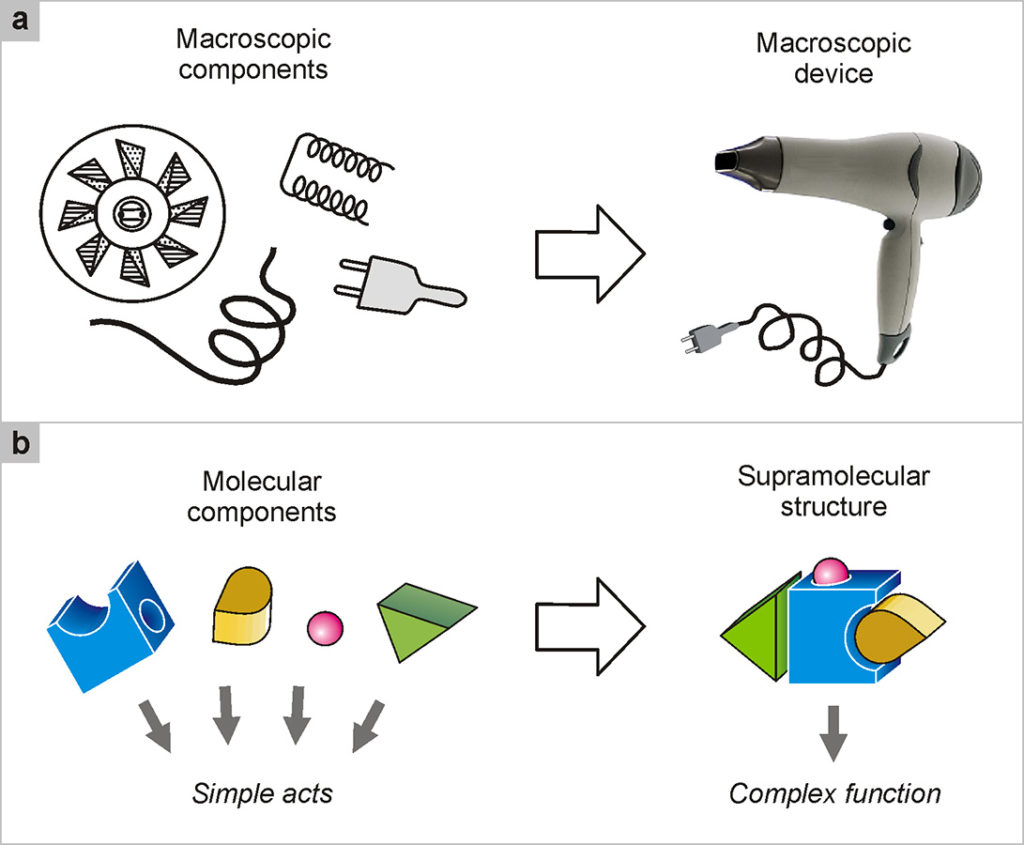1.5. The chemist as an engineer
The bottom-up logic followed by chemists to construct nano-sized devices and machines is very simple and can be illustrated as shown in Fig. 8. To create a device of the macroscopic world (for example, a hair dryer), an engineer builds components (a switch, a fan, a resistance), each of which is able to perform a specific action, and then assembles them in an appropriate manner, thus obtaining an apparatus which, powered by energy, performs a useful function. The chemist proceeds in the same way, with the difference, however, being that the engineering process takes place at the molecular level. Once the function that the device has to perform is established, the construction of the necessary components, which are molecules capable of carrying out specific tasks (programmed molecules), begins; then the various molecular components are assembled into organized supramolecular structures, so that the coordinated set of actions of the components can give rise to the required function (Balzani 2008).

Research in this field has already allowed to obtain a vast series of devices at a molecular level able to imitate the functions performed by the components of today’s electronic equipment: wires capable of conducting electrons or energy, switches capable of allowing or prohibiting the passage of these flows, plug/socket and extension systems, current rectifiers, antennas for the collection of light energy, memory elements, logic gates, etc.
In this book, we will describe a few most significant examples of artificial molecular machines; first, however, it is useful to briefly go over the operations of some natural molecular machines.


